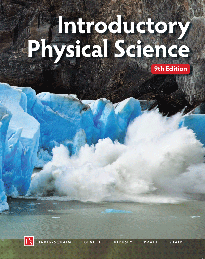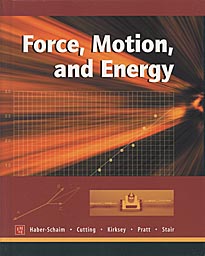 Force, Motion, and Energy (FM&E)
Force, Motion, and Energy (FM&E)
Student Textbook (2002)
|
|
Force, Motion, and Energy (FM&E) was developed as a complement to Introductory Physical Science (IPS) to address a wider range of physical science standards. In this textbook, the renowned writing team of Haber-Schaim, Cutting, Kirksey, and Pratt, joined by Robert Stair, take the student down a well-developed path toward a carefully selected set of fundamental outcomes called for in the National Science Education Standards and most state standards. Because the content is selected for its important scientific value and its usefulness in future science courses, FM&E avoids the pitfall of being a "mile wide and an inch deep."
Starting with thermal energy, forms of energy are introduced in a unique and straightforward way that is much more relevant to students' future studies in chemistry and biology than the traditional approach that leads to energy through mechanical work. Students examine a variety of different forms of energy and the ways in which one form can be transformed to another. The result is the development of one of the "big ideas" of physical science—-conservation of energy.
Reviews
"... children who take [Force, Motion, and Energy] will be well prepared for future science courses and even if they choose not to take other science courses, they will have an excellent understanding of the scientific approach... I strongly recommend this book." —Dr. John Hubisz, North Carolina State University Middle School Physical Science Resource Center (read the entire review)
“…this wonderful book displays fine scientific insight, masterful pedagogy and interesting writing as it sets forth standard subject matter dealing with mechanics and heat. The sequence of topics is unorthodox, but the handling of those topics is almost impeccable -- logically, experimentally, and pedagogically.” — Lawrence S. Lerner, “The Textbook Letter”, Volume 12, Number 4 (read the entire review)
Also Available
|
|
Available: Now

The new 9th Edition of Introductory Physical Science (IPS) continues the IPS tradition of guiding students to knowledge of physical science and the way scientific knowledge is acquired.
Inspect the table of contents and more details on our new edition of IPS.



